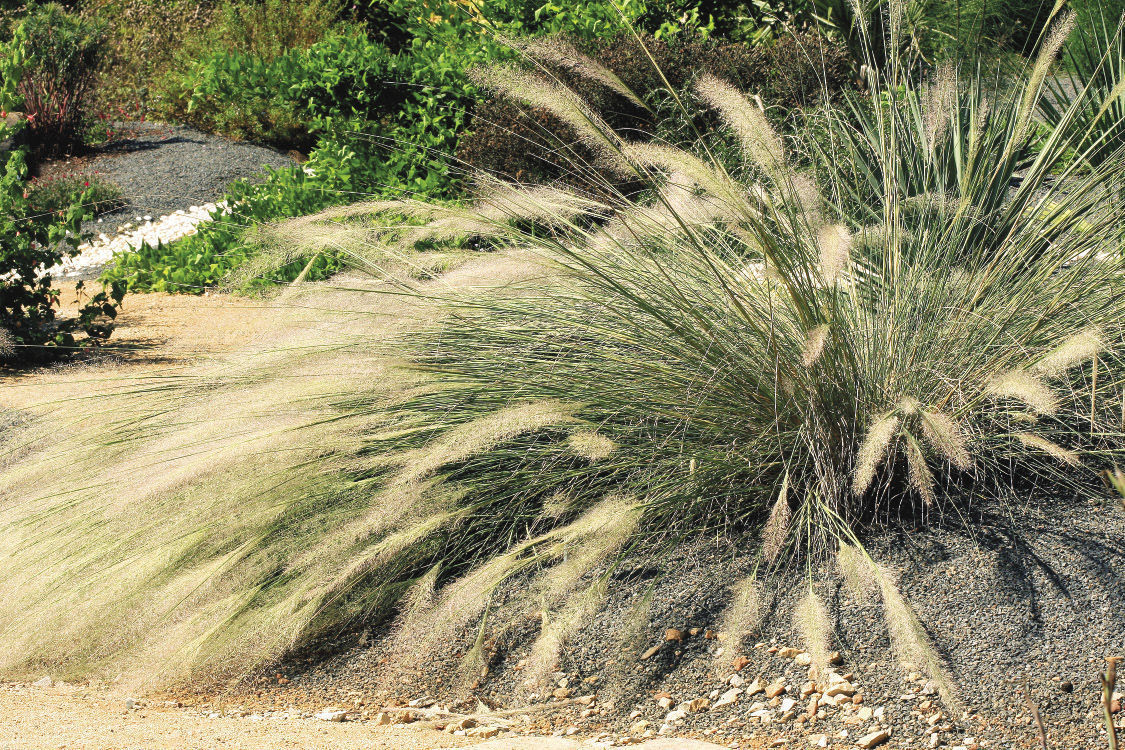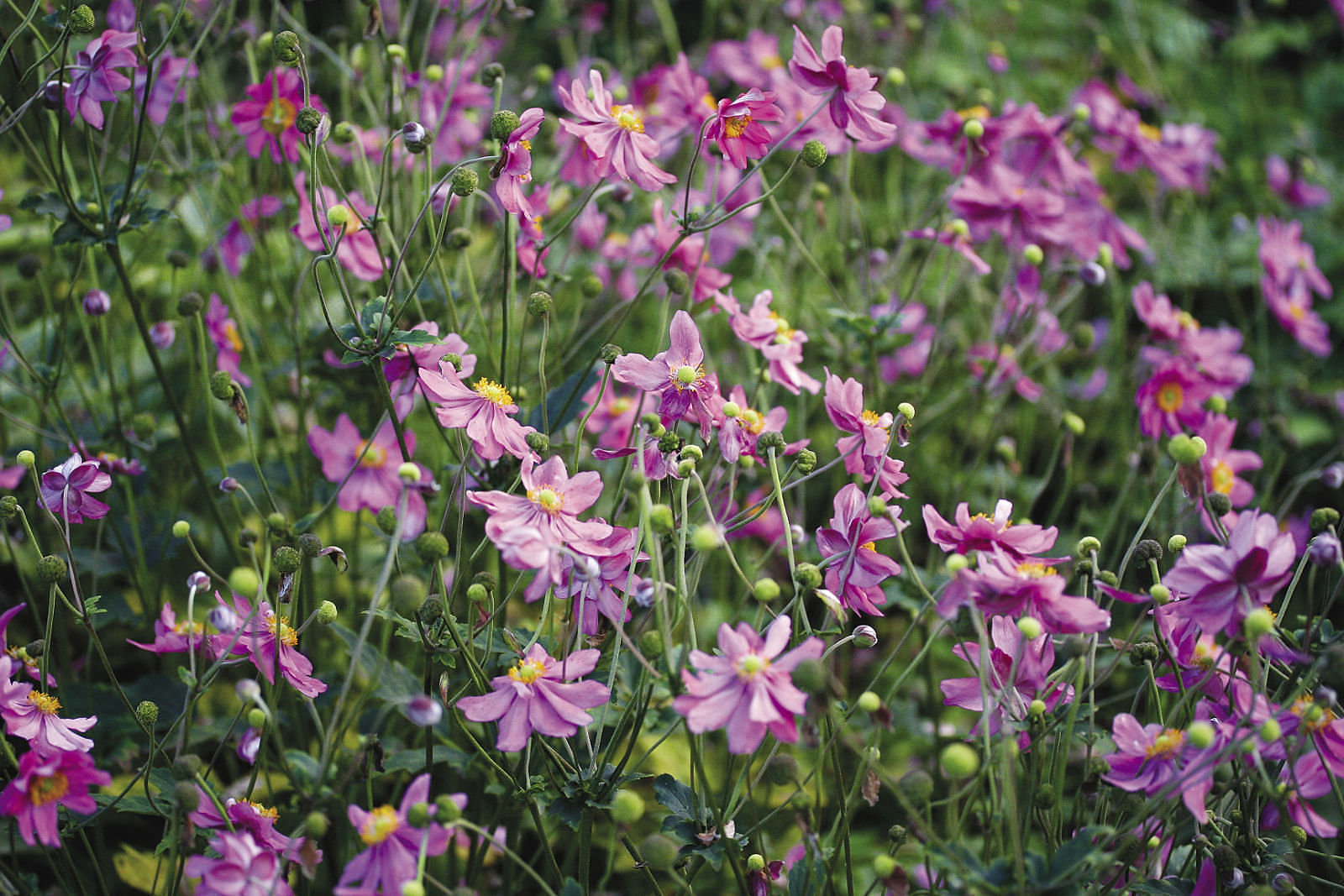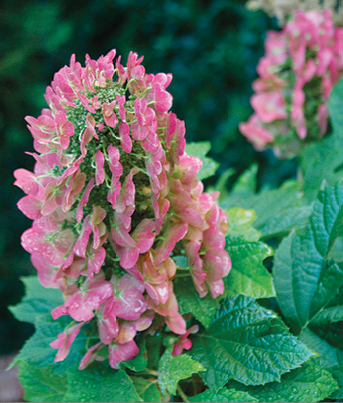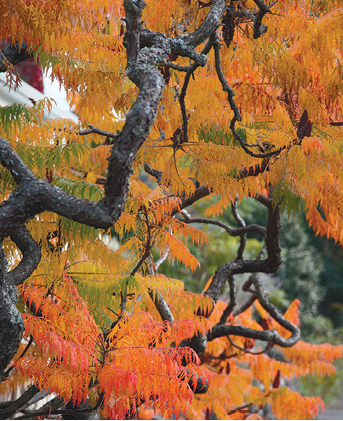
If you’re sick of the same old asters and mums, why not plant an unexpected fall-star instead?
Here some truly out-of-the-ordinary plants for upping your fall garden game in the Southern Plains. Some of these options provide excellent foliage color while others put on a floral display in the final throws of October.
Looking for some autumnal stars for your containers instead? Read Autumn Pots Minus the Mums by Sarah Partyka for even more out-of-the-box fall planting inspiration.
1. ‘Pink Flamingos’ Muhly Grass

Name: Muhlenbergia ‘Pink Flamingos’
USDA Hardiness Zones: 6 to 10
Size: 3 to 4 feet tall and 2 to 3 feet wide
Conditions: Full sun to light shade; tolerates a range of soil conditions
While autumn is usually dominated by colorful foliage in golden hues, ‘Pink Flamingos’ muhly grass offers something unique. In early autumn, it erupts with airy pink flower plumes for a dramatic show. When planted en masse, this plant provides drifts of vibrant color unmatched in the landscape. Flowers are followed by tan seed heads that hold through winter, offering food for birds. Its upright, fine-textured foliage is blue-green and has striking form. ‘Pink Flamingos’ is drought tolerant and deer resistant. It also tolerates salt and is perfect for coastal environments as well as dry interiors.
2. ‘Prinz Heinrich’ Japanese Anemone

Name: Anemone hupehensis var. japonica ‘Prinz Heinrich’, syn. ‘Prince Henry’
Zones: 5 to 8
Size: 2 to 3 feet tall and 2 feet wide
Conditions: Partial shade; fertile, moist, well-drained soil
A gem of the autumn landscape, Japanese anemone produces an abundance of semidouble mauve blossoms that are excellent for cutting. Wiry stems hold flowers well above the foliage and sway gracefully in the breeze. A yellow button of stamens at the center of each flower provides nectar for visiting butterflies. ‘Prinz Heinrich’ is among the longest-blooming varieties, offering two months of blossoms from September into November. Deeply lobed, dark green foliage is attractive throughout the growing season. Plants will spread slowly to form small clumps and are delightful in woodland and shady cottage gardens.
3. ‘Ruby Slippers’ Oakleaf Hydrangea

Name: Hydrangea quercifolia ‘Ruby Slippers’
Zones: 5 to 8
Size: 3 to 4 feet tall and 4 to 5 feet wide
Conditions: Full sun to partial shade; medium, well-drained soil
Named for its flowers that emerge white in early summer, then turn a soft pink before deepening to rose, ‘Ruby Slippers’ is a magnificent oakleaf hydrangea noted for its compact size, rounded form, and large upright flower heads. The ruby red flowers have a long vase life and are perfect for drying. This plant holds its flower heads well into fall and winter for multiseason interest. Dark green foliage turns a magnificent mahogany red in autumn, and exfoliating bark provides winter interest. ‘Ruby Slippers’ truly delivers four seasons of interest.
4. Cutleaf Staghorn Sumac

Name: Rhus typhina ‘Laciniata’
Zones: 3 to 8
Size: 10 to 12 feet tall and wide
Conditions: Full sun to partial shade; prefers dry to medium soil but tolerates a variety of soil conditions
Light a fire in the autumn landscape with the intense red-and-orange foliage of cutleaf staghorn sumac. In addition to the stunning foliage of this native beauty, female plants produce showy fruit clusters that ripen to a brilliant red. Fruit clusters persist through winter, providing food for wildlife. In summer, soft fernlike foliage lends a tropical look to the garden, while the upright, multistemmed branches create an intriguing silhouette. Cutleaf staghorn sumac makes a graceful accent, whether in the ground or in large containers. Keep in mind, however, that sumacs sucker aggressively and require management in small landscapes.
Kimberly Toscano is a horticulturist and the former host of Oklahoma Gardening, a weekly PBS television program produced by the Oklahoma Cooperative Extension Service.
Photos: #1, Bill Johnson; #2, millettephotomedia.com; #3, Michelle Gervais; #4, Joshua McCullough


















Comments
Log in or create an account to post a comment.
Sign up Log in